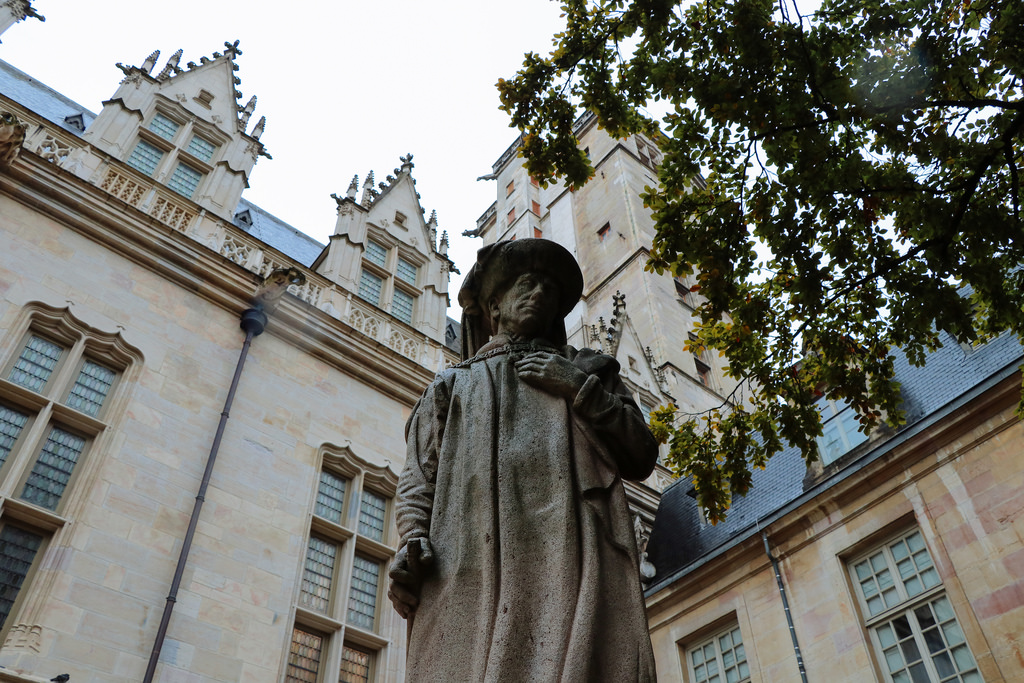Strasbourg is one of the most beautiful cities in France and it definitely deserves…
Dijon
upd 11 January 2024
Dijon is a small French city and the capital of Burgundy. The cozy atmosphere, half-timbered buildings, Gothic cathedrals and streets that seem to have not changed since Middle Age. Unlike many small European towns, Dijon is full of life and there are a lot of cafes, shops and museums.

History
Dijon was part of the Roman Empire until the 5th century, when it was occupied by the Burgundians, Franks and Normans. In the 11th century, it finally became part of the Duchy of Burgundy, and over time it expanded its influence and became the capital. In the 15th century, Burgundy became part of France. From this moment on, Dijon began to flourish and became an important economic and administrative center. During this period most architectural and painting monuments appeared.
Things to see
A special navigation system was created for tourists – an Owl’s Trail. You can easily follow this trail and see all the main historical sites. It can be found on popular streets and then you should follow numbers on tiles. Owls were not chosen for navigation by chance – they are the symbol of Dijon.
Half-timbered buildings
Many half-timbered houses from the 12-15th century were well-preserved in Dijon. Fachwerk – half-timbered – houses are characterized by a frame structure, which is visible on the facade. These medieval style was especially common in Germany, but are also found in France.


Notre-Dame
Church of Notre-Dame of Dijon was built at the beginning of the 13th century in the Gothic style that was also common in the Middle Age.


Like many medieval cathedrals, the walls of Notre Dame are decorated with strange creatures: gargoyles and anthropomorphic monsters.

Cathedral of Saint Benignus of Dijon
Another Gothic cathedral from the same century – Cathedral of Saint Benignus. Saint Benignus is considered the patron saint of the city because he who brought Christianity here.
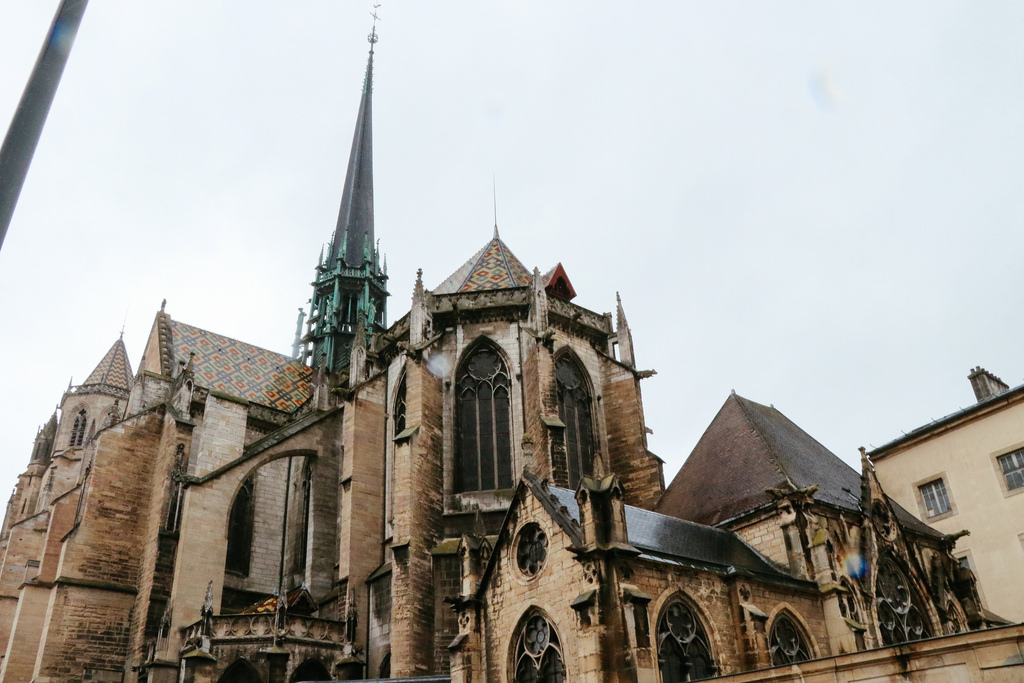
St. Michael’s Church
At the end of the Middle Ages architecture has started to change. This change can be clearly seen in the Church of St. Michael. It was built in the 16th century in a transitional style from Gothic to Renaissance. This is perhaps the most beautiful Dijon cathedral – a mixture of styles creates a very impressive appearance.
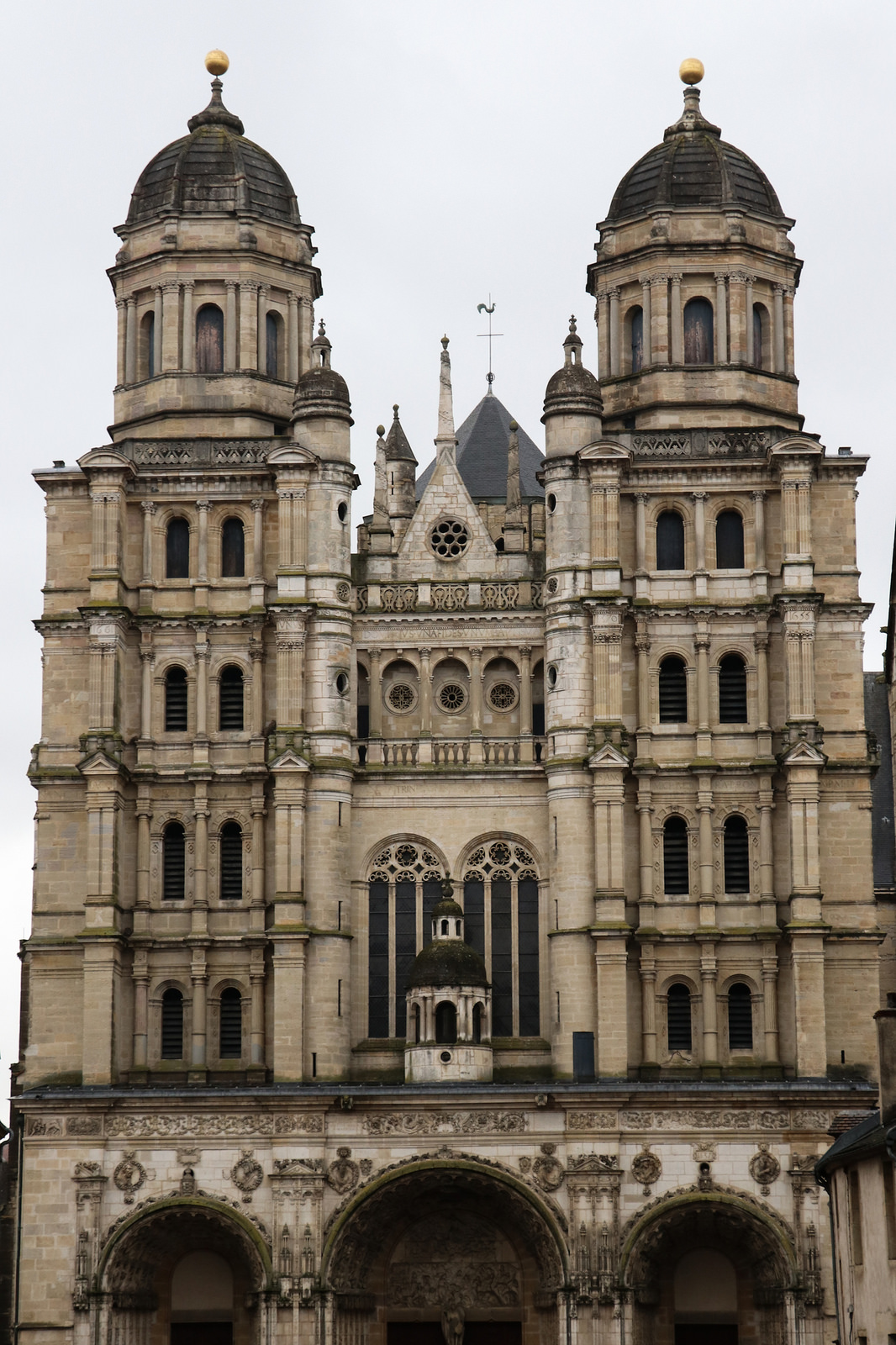
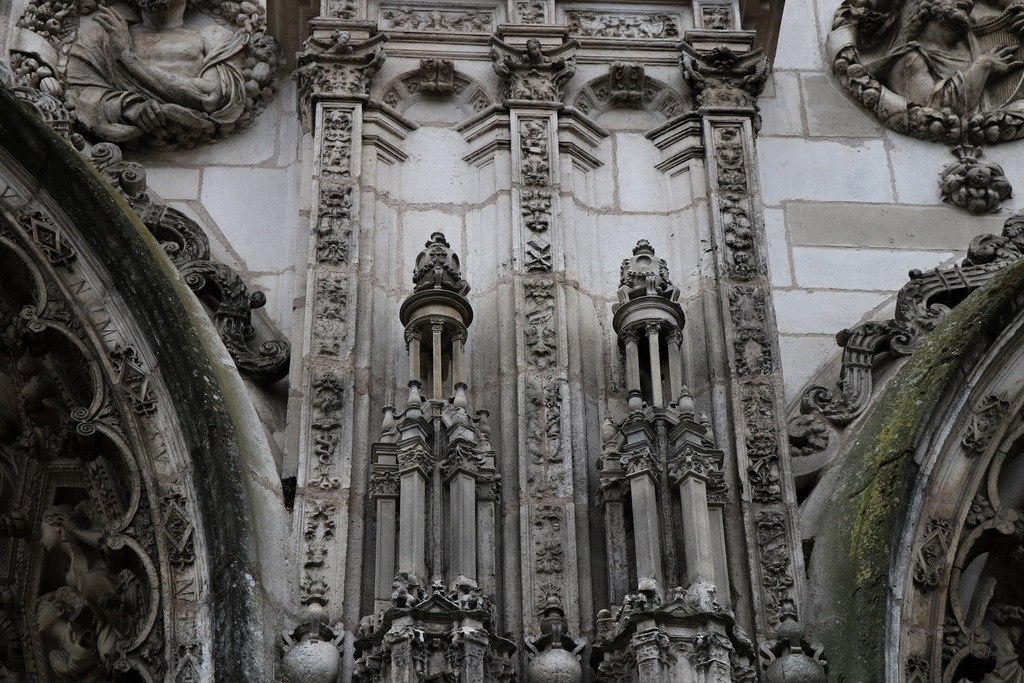
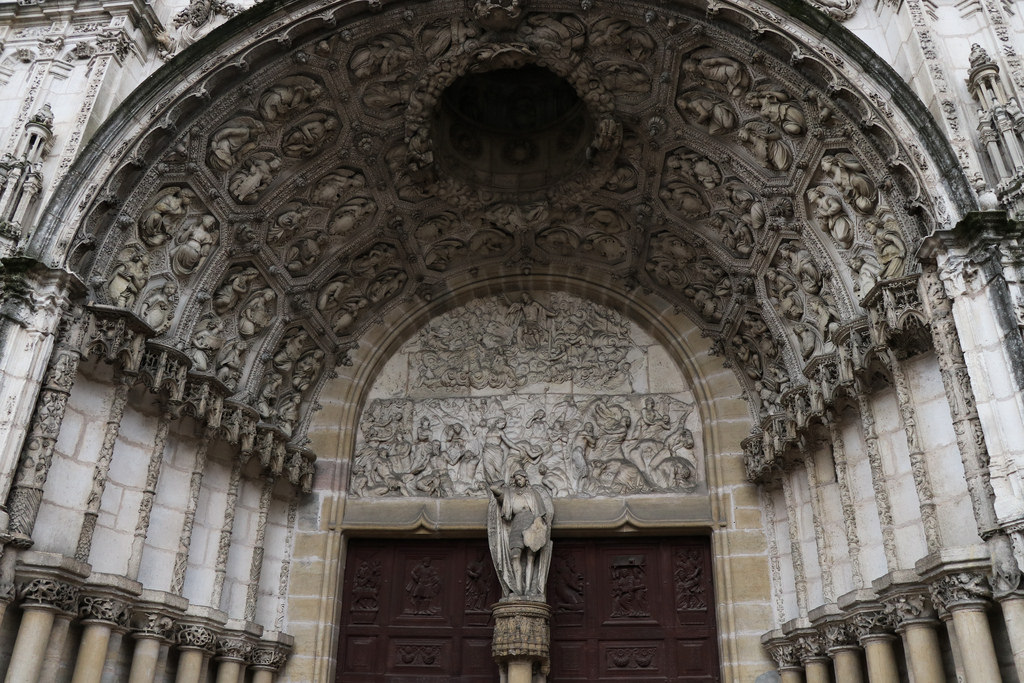
You definitely should go inside: high vaults, stained glass windows and expressive Renaissance sculptures.

Darcy Square
Darcy Square is the main square with Guillaume Gate, La Cloche Hotel and a fountain with a sculpture of a girl and a frog.
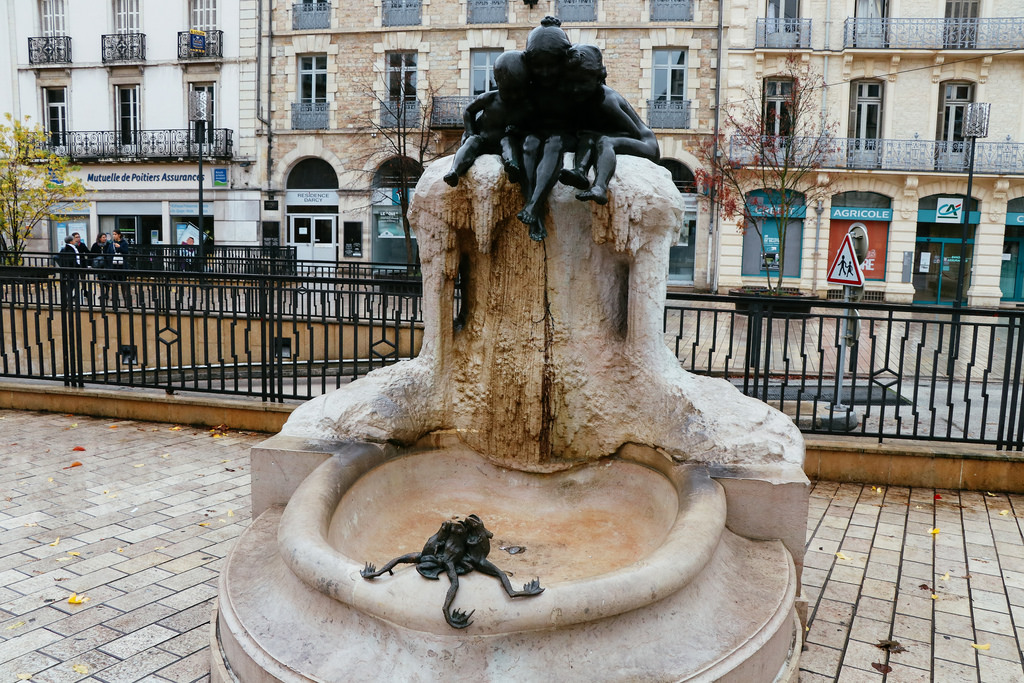
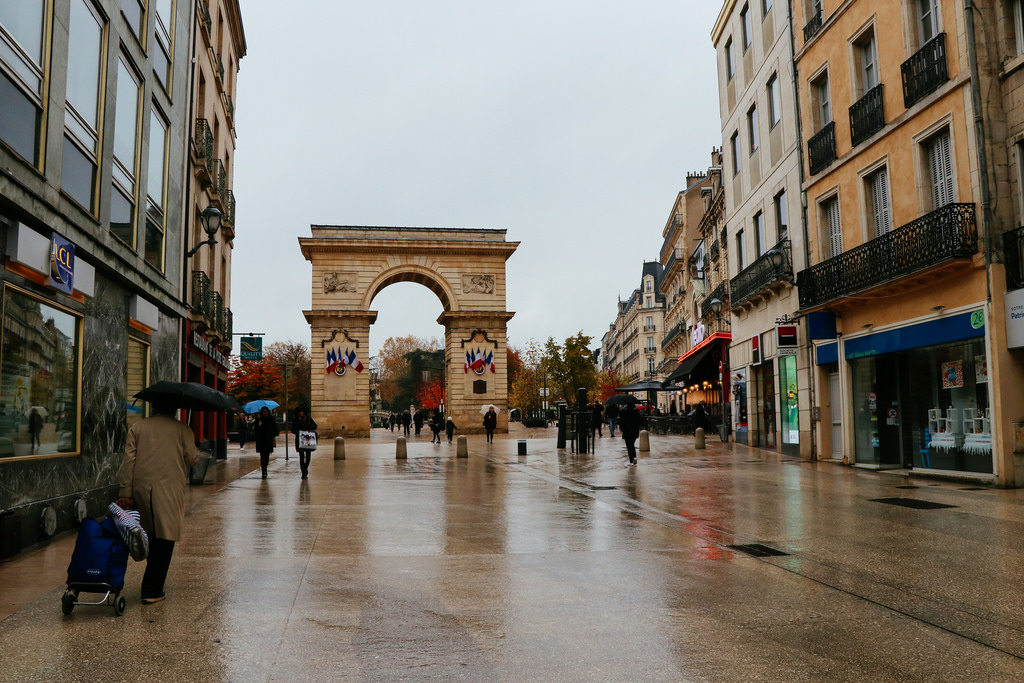
Palace of the Dukes of Burgundy
The palace used to be the residence of the Dukes of Burgundy. In front of it is the Museum of Fine Arts.
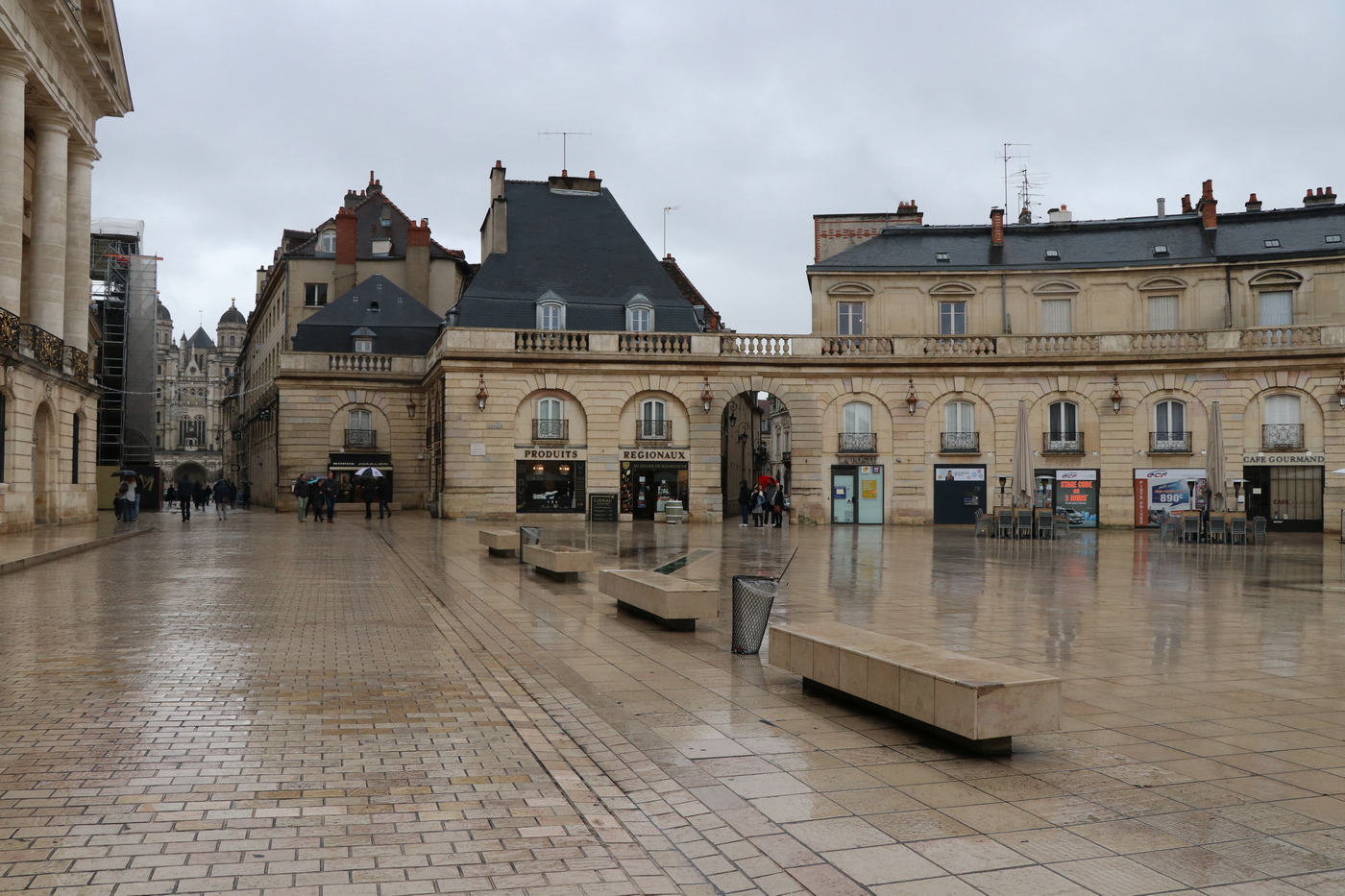
Main street
Rue de la Liberté is the main street that goes through the entire historical center. This pedestrian street has a lot of cafes and shops, including Galery Lafayette and Place François Rude. I really recommend you to walk the entire street to see many interesting buildings.
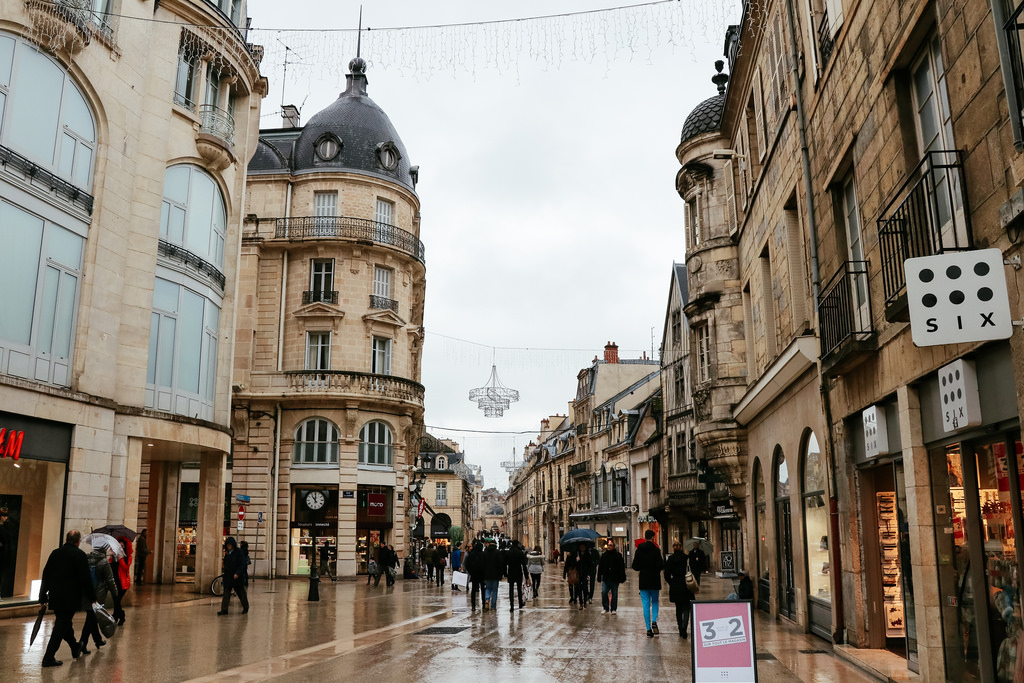
Parliament
The Parliament of Burgundy was built in the 14 century and used to be the administrative center of the entire region.

Architecture
Djon architecture is suprisingly diverse. It’s not only limited to Gothic and Fachwerk, you can see many examples of Art Nouveau, Neoclacissism and Eclectic.
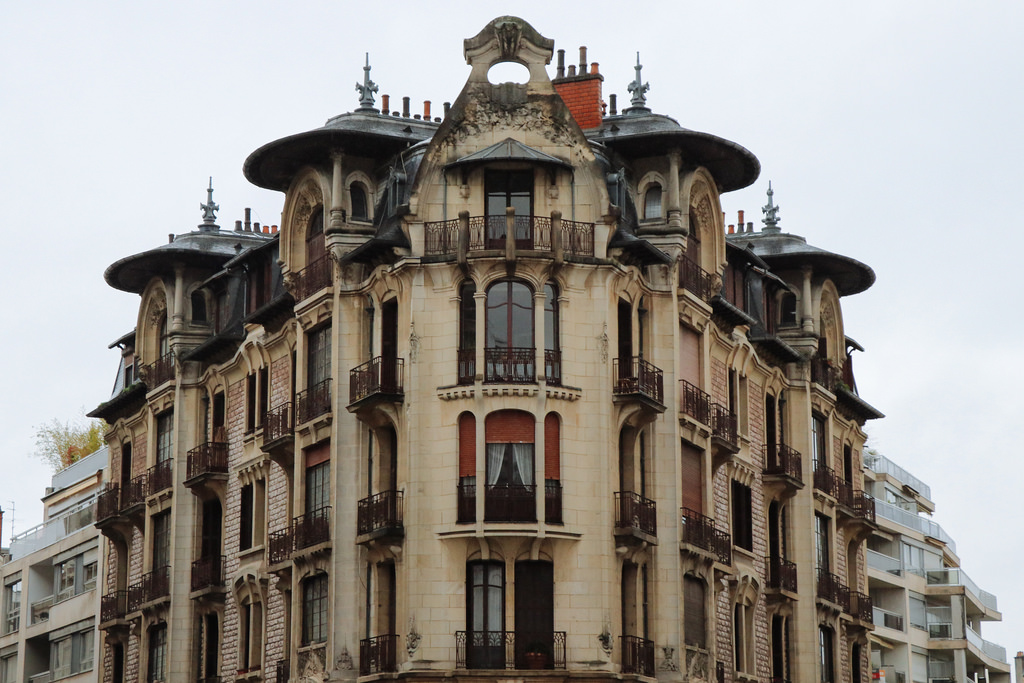
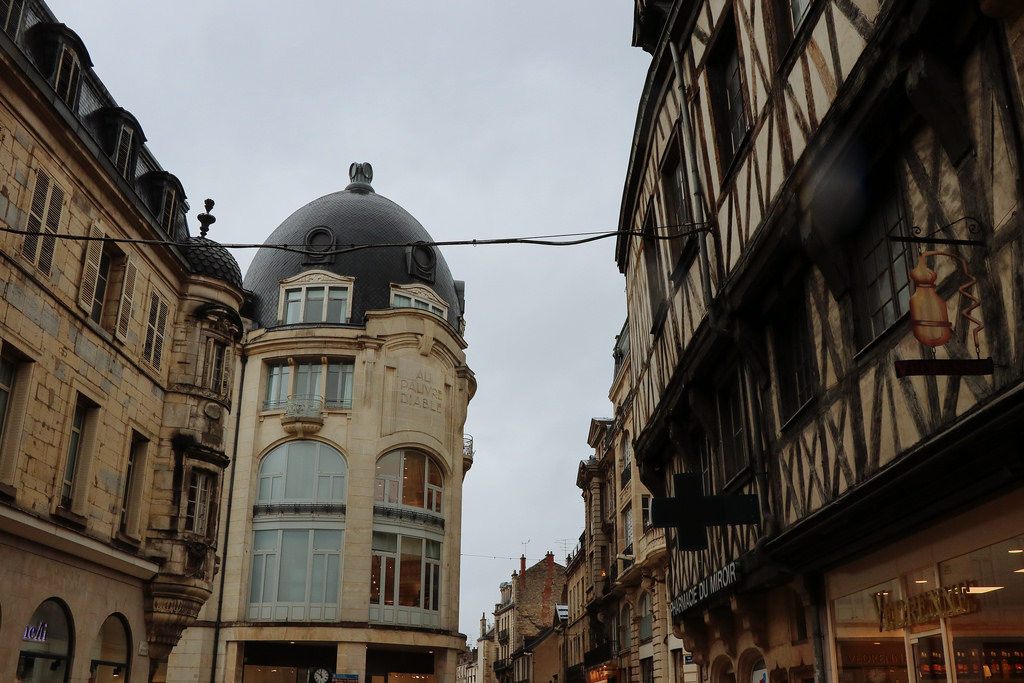
Market
Markets are a big part of French culture, so you should definitely visit Dijon central indoor market hall and flea market on place Grangier.
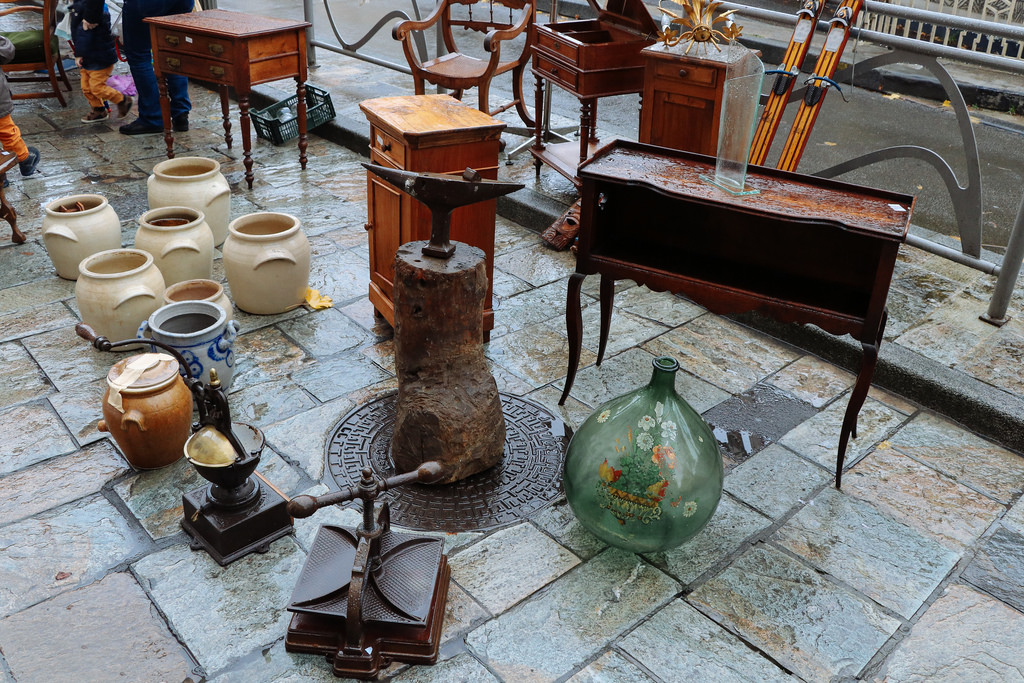
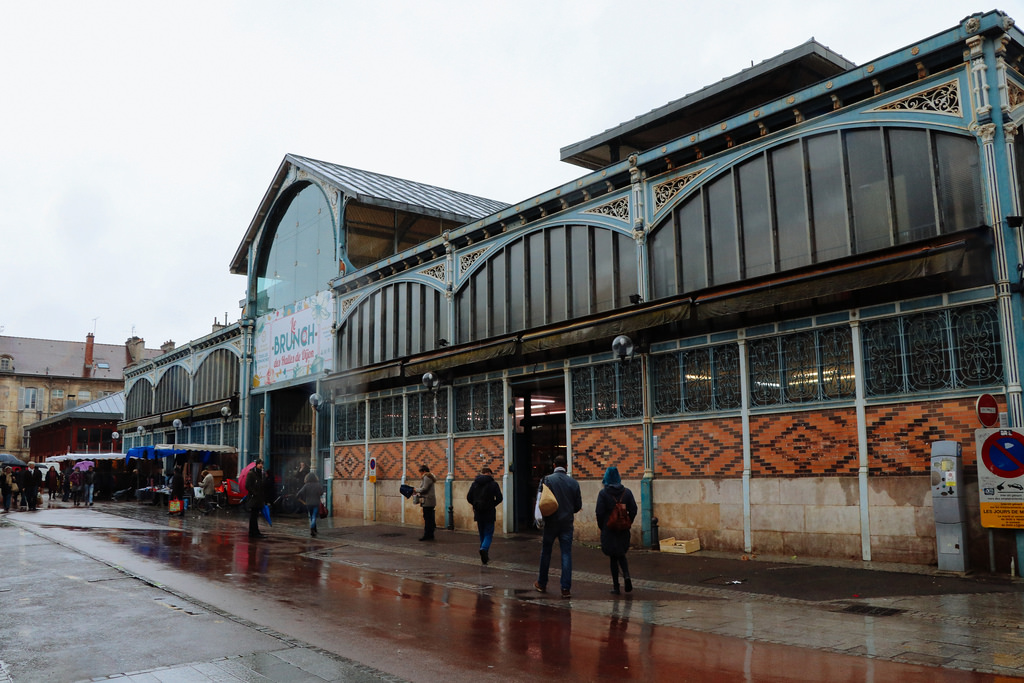
Where to stay
Dijon offers various types of accomodation. Those who travel on a budget should check apartments: Le Gustave, Le Freesia.
The best value for money are the hotels, for example: Hôtel Montchapet, ibis, Hôtel La Bonbonnière.
Map
In one day in Dijon you can get around the Old Town, see Gothic cathedrals, half-timbered houses and other buildings from the Middle Ages; buy Dijon mustard; have lunch in an authentic cafe or restaurant; visit museums. Good luck!
